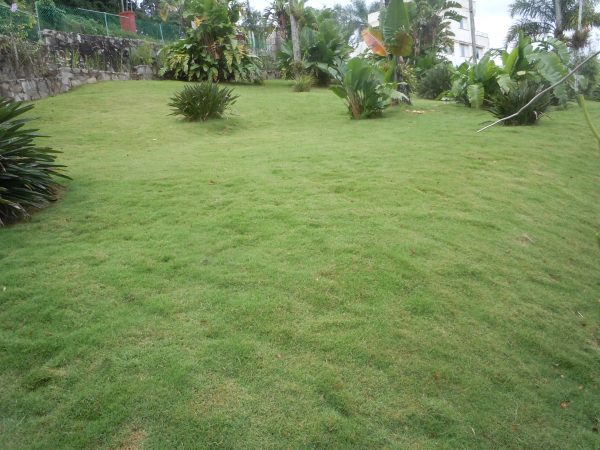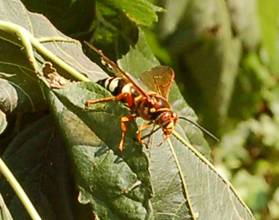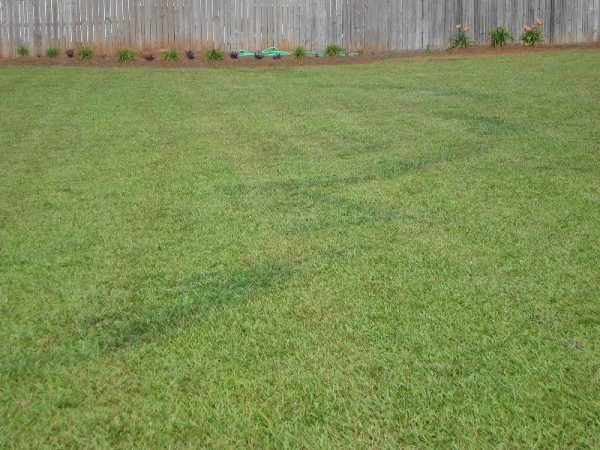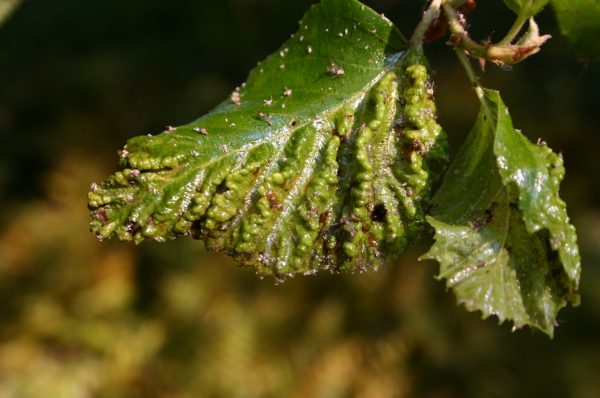Treehouse – Building
Tree-Literate Treehouses
Dr. Kim D. Coder
Professor, Silvics/Ecology
Warnell School of Forest Resources
The University of Georgia
January 1995
There is an attraction between trees and children. A tree’s constant motion even in the stillest air, and its great size and reach make a tree fascinating. At some stage during child development, when motor skills and hand grip are refined and strong, tree climbing becomes a play task. The world is filled with trees to climb.
The next logical step after tree climbing and attaching swings in trees, is imagining a treehouse. As in all imaginative play, the most basic structure in a tree can represent a castle in the clouds or a jungle hide-a-way. When you see your ten-year-old headed with a hammer, nails and scrap lumber toward your yard tree, there are some immediate decisions to be made. Safety to children is the only major concern. Here will be reviewed some minor tree issues you need to think about.
Trees do not heal wounds, but seal them off and grow over old injuries. Once wounded, the tree is injured for life. Minimizing the number and depth of injuries can help a tree cope with a treehouse. Minimize the number of separate injuries inflicted, especially to the main stem. Branches are disposable compared to the trunk, and should bare the majority of any wounds. In other words, mess with the branches not the main trunk of the tree.
Trees should be selected that have large, strongly connected limbs on the lower part of the stem. Selectively prune away branches, sprouts and twigs that, when weighed with rain and propelled by winds, will not slash sideways or up and down into the area of a treehouse. Make proper pruning cuts to remove branches. Do not use pruning paints on any wounds.
Treehouses should be designed to rest upon major branches and to nestle around the trunk. This will minimize the need for any injurious attachments. Remember trees bend and twist in the wind, so simply jamming or wedging boards between branches or into crotches will lead to failure. Assure a treehouse stays snug against a branch by using rope. All rope attachment hardware should be on the treehouse, not screwed into the tree. Attaching a treehouse to tree branches with rope can prevent large wind storms from blowing a treehouse away, or prevent ambitious and ingenious children from changing design concepts and injuring themselves.
Depending upon how a treehouse will be attached and positioned in the tree, wrap the main stem and basal portions of major branches with layers of corrugated cardboard held with snug, not tight, wire. This cardboard cover should not be attached where there will be need of hand and foot holds. Cardboard will help protect the bark during treehouse installation and general play in the tree.
Carefully consider how children will enter the treehouse. Do not nail individual ladder rungs to the trunk for climbing. Utilize a self-supporting ladder tied to the tree, or a heavy, unlooped, knotted rope for entering the tree. Remember that most in-tree injuries occur when climbing up and down. For many trees with low branches, a ladder or rope for entry is unneeded and represents a safety concern.
Next determine how high off the ground to build a treehouse. For most play, any height above the ground represents the thrill of a treehouse. Build a treehouse for easy and safe access, not to maximize height above the ground. Three to five feet above the ground in a tree with low, reclining branches can be easy to construct and to maintain. Unfortunately, taller trees and branches are more common, resulting in higher treehouses. Construction problems greatly increase with increasing height above the ground. Whatever the height, insist that children not jump from the treehouse to the ground. Always climb down the trunk, ladder, or rope.
Within the tree, treehouses should be built in the bottom one-third of tree. Determine the total height of the tree, divide by three and keep the treehouse structure in the lowest third of the tree. If attachments are needed, attach the treehouse only to the branches, not the trunk. Position the treehouse so it rests or is attached to the basal one-third of each branch.
Wooden materials should be used in building a tree house. Wood is “soft” on the tree and children, is strong for its weight, and withstands bending and mechanical shocks well. Attach the main floor pieces or braces to branches with heavy rope in multiple wraps. Do not use metal nails or screws in a tree. If further stability assurance is needed, pick one to three branch sites (not on the trunk) for installation of single metal eye-bolts.
Use eye-bolts with round washers and a nut. Pre-drill eye-bolt holes one-sixteenth of an inch larger than the eye-bolts shafts. Drilling requires a special extra-long bit for big branches. Do not use any type of lubrication on the bolts and do not attempt to seal the edges of the drilled hole. Tighten the nut firmly against the washer on the back side. The washer should be seated into the bark only as far as the surface of the wood. Do not scrap pieces of the bark off the tree larger than the bolt washer. Minimize the surface area of any damage.
Treat these support bolts as permanent additions to the tree and do not remove them each year. The eyebolts should be inserted in a vertical position, never horizontal across a branch. Only branches should be drilled in this way, never the main stem. Select strong branch anchor sites in the lowest third (segment length closest to stem) of the branch. Avoid inserting bolts into areas with decay or visible structural faults. Use sharp bits and saws for clean cuts.
The weight of the treehouse should be supported by big tree branches. Use multiple wraps of rope around the branch, through the eye-bolts, and around treehouse parts in attaching the treehouse to a tree. These rope attachments should keep the treehouse in position but not bear its full weight against gravity. All loose ends of rope should be tied-up or melted into a knot. Remember, treehouses should be temporary, seasonal structures that are removed each year. This allows a tree time for adjustment, and a parent time to check and repair the treehouse. Use new, synthetic, heavy rope for reattachment each year.
Treehouse structures need to move with the tree. Tree trunks and branches have three primary movements: twist, sway, and bounce. During normal winds, the tree house must be able to flex and slide enough to not damage the tree, pull itself apart, or break loose from its attachments. The bottom and inner third of the tree crown has much less movement than higher portions. Attachments, like synthetic rope, that can flex slightly with tree movements are ideal.
The floor area of the treehouse should be slightly tilted to shed water. Any water falling on the treehouse should be allowed to run-off away from the tree trunk and fall freely to the ground. Water and leaf litter should not be allowed to accumulate on or inside a treehouse. Wet leaves and twigs can be slippery and initiate structural decay in wood supports.
Build-in thin, open gaps along the bottom and top of the treehouse to allow for good air circulation, for water drainage, for plenty of light, and for breezes to blow tree litter away. These gaps also allow the interior of the treehouse to be seen from the ground. This visual assessment is necessary to see if the treehouse is occupied, or if an injured child in inside.
Any walls built on a treehouse must stand the pressure of bodies pushing from the inside-out and wind pushing from the outside-in. One means of testing walls, floors, and roofs in a treehouse is for an adult to carefully enter the treehouse platform, lean against walls, and shake the whole treehouse. Usually the strength and weight of an adult will make any structural weaknesses apparent. Treehouse structures will weaken over time and should be checked monthly, removed in the cold season, and examined after every storm.
An unexpected major liability problem in a treehouse is the structural parts breaking apart, flying-off, and striking surrounding people and property in windstorms. Treehouse must be constructed well to hold up to children and the environment in a tree. Tree will flex and push upon a treehouse and winds will buffet a treehouse. Strong construction and simple designs will maximize the usable and safe life-span of a treehouse.
Do not allow children to occupy a treehouse in storms, heavy rains, or anytime lightning is a possibility. Even if a treehouse is enclosed with a roof, it is no place to play in wind and rain storms. Do not allow overnight camping or sleeping. Treehouses are meant for daylight play. In-tree camping requires special precautions and equipment. Young children should not be allowed or tempted to climb in or around a treehouse. Control access through fencing, access ladders, and ropes.
Do not install or allow wires, electrical lines, heat sources, fires, or metal poles in or around a treehouse. Any tree selection process for building a treehouse should have already eliminated trees near utility lines, antennas, chimneys, and over-hanging roofs.
Do not paint hand holds or walking surfaces. Leave these surfaces in natural wood or use a roughening agent to assure firm and certain traction. Do as much painting of treehouse parts on the ground and avoid painting tree parts. Do not paint bindings or structural fasteners, as this can hide problems or lead to strength loss. Check knots, bindings, and bolts for damage and loosening. In winter carefully dismantle the treehouse and discard old rope, and damaged or degraded materials.
Treehouses may be for kids, but require adult construction and supervision for safe play and for minimizing damage to the tree. Treehouses are inherently dangerous and require careful maintenance, but treehouses can be fun, educational, and challenging. Other forms of tree houses not discussed here are fully functional houses in a tree and special artistic treehouses used for advertising.
Whatever the use of a treehouse, remember to defend the life of a tree that will stand long after any treehouse is gone and the children have departed. Piece together your treehouse carefully to minimize major, long-term tree injuries.















